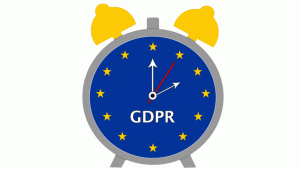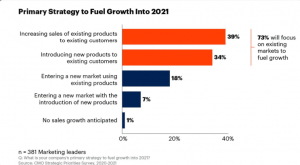The availability of customer data provides endless opportunities for businesses. Businesses can use customer data to amplify their marketing efforts, better understand their customers, hit targets, and grow their business.

The part that most miss, is the importance of having an effective data strategy in place.
That strategy should outline your roadmap and identify what to do with the data that your company collects over time.
But hey, don’t be so hard on yourself. Creating a data strategy is no simple task. To get you started, here is a 5-step guide to creating a data strategy that makes sense.
Step 1: Identify your key stakeholders

Having access to data is important to many people in different departments within an organization. It’s important to identify key stakeholders for your customer data and who owns it. Not one person or team will have complete visibility to all the data your company collects. While different departments, like: marketing, sales, finance, customer success, product development, and operations, have many common requirements, they also all have unique requirements that need to be addressed.
Once you have identified these key stakeholders you can now create a strategy to assemble a group that will be the data champion for their team. Having a data champion for each team will make sure that you don’t have too many “cooks in the kitchen” while maintaining a high level of standard. This group will help you understand the requirements across the organization to avoid data silos, while improving communication around data management.
Step 2: Assess everyone’s needs and requirements
Now that you have your working group of key stakeholders, it’s time to perform a needs assessment. This is where you need to start harvesting the wisdom of your data champions. They will help you perform a needs assessment that will shed light on the requirements for gathering data, informing your customer data strategy development, and for future data requirements.
Use surveys, individual interviews, and group meetings to brainstorm and gather requirements. Uncover questions about, which business groups uses what kind of data? Which business group needs a data field in the CRM tool? What tool works best for everyone? Working collaboratively with your key stakeholders will help you understand existing and planned business processes that directly involve customer data needs and applications.
During your needs assessment you need to go beyond the data needs but also assess the technical needs of data. To ensure the technical side of things is in order, make sure you have an IT representative in your needs assessment process. This will ensure that all the requirements that key stakeholders have are attainable.
Step 3: Create a change management strategy

Both large and small changes to data fields in your customer data management tools can result in a small or large shift in how people use that data. Changing the data fields can cause managers to see a drastic change in their monthly reports, targets, and baseline for that year.
You will need to consider how the data is used because if business units rely on that data to get year to year comparisons, then it’s important that the data from the previous year is shown accurately. Which is why it’s extremely important to create a change management strategy to ensure that you have proper data governance methods and process that align with access policies, conflict management, and data usage.
Step 4: Create a high standard of data integrity

You’ve now identified who the people are that need access to data, what all the requirements are, and have laid out a strategy on what to do if anything needs to be changed. Now, it’s time to make sure the data that you are collecting is accurate. But, how do you make sure that your data is accurate if you are going to expand the type or amount of data you collect? You don’t want to be making important business decisions based with inaccurate data.
Which is why it’s important to create a whole different strategy on how you are going to make sure you have accurate data. For example, if you want to gather people’s phone numbers, use a tool that sends a code via text to people’s mobile phones to confirm the legitimacy of the phone number they provided. Of course, there’s always room for potential mistakes, but that’s what creating a data integrity strategy is for. This strategy should include:
- Identifying the resources you’ll need to collect accurate data
- Internal communications plan to address change management
- Data collection prioritization
- Analysis of data
- Then determining the accuracy of the data
Step 5: Analyze and determine what to do with your data
You should now have a proper understanding of the business and technical side of customer data within your organization. This is the fun part of your data strategy, analyzing and determining what to do with the data. If you like to solve puzzles and are creative, you have to make sense of all the data that you have gathered and generate strategic options for your stakeholders to consider. In the end your data strategy must be able to provide your key stakeholders and business quick and complete access to all of the customer data and analytics it needs.

This process is fun but can also be very difficult. Try looking from the top down to give you a better view of all the data points and avoid the bottom up approach because it can overly constrain your ideas. However, a harmonious approach is to oscillate between the two. This will allow you to come up with big-picture ideas that aren’t constrained by existing processes and technology, but still provide a practical plan that uncovers genius ideas that resolve major requirements from your stakeholders.
Once you have your ideas together, start prioritizing your strategic options. This means it’s time for you to start presenting your findings to internal stakeholders so they can choose from the available options you came up with during your ideation phase. So put on your business hat and work your charm to gain buy-in from the decision-makers to fund the effort to implement your ideas.
Do you have any data strategy tips you’d like to add? We’d love to hear them in the comments below!
Business & Finance Articles on Business 2 Community(177)






